- Administrator
- Albums and Singles
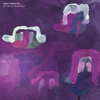 Pianist Espen Eriksen’s debut album with his trio stands out but not in a good way. The insipid compositions are more at home in the background of an expensive restaurant or bar rather than on my stereo. Monotonous and emotionally detached, this collection of instrumental jazz fades into the background far too easily. The term "audio wallpaper" gets thrown about far too freely but You Had Me At Goodbye certainly deserves this classification.
Pianist Espen Eriksen’s debut album with his trio stands out but not in a good way. The insipid compositions are more at home in the background of an expensive restaurant or bar rather than on my stereo. Monotonous and emotionally detached, this collection of instrumental jazz fades into the background far too easily. The term "audio wallpaper" gets thrown about far too freely but You Had Me At Goodbye certainly deserves this classification.
 
Rune Grammofon have always been at the forefront of Norwegian jazz; bands like Shining, Supersilent and Elephant9 all pushing the boundaries and expectations of jazz further and further afield. Therefore, hearing the piano bar style jazz of the Espen Eriksen Trio was a shock to me. Unlike the shock of the new that accompanied my first time hearing Supersilent, this is a shock of the banal. The main problem with You Had Me At Goodbye is not that the music is not pushing any boundaries but that it fails to connect with me on any level.
Credit where it is due, the trio all play perfectly well. The clinical execution of their music is textbook technical proficiency but ultimately sterile. From the opening notes of "Anthem," I feared that there had been a pressing error and some muzak had been mistakenly labeled as the latest Rune Grammofon release. However, the hotel lobby piano melodies that Eriksen employs are meant to be there. The accompanying drums and bass are equally pretty but shallow, the music ending up beige in comparison to the rich hues of traditional and contemporary jazz. "In the Woods" brings to mind the works of Ludovico Einaudi but feels bland in comparison.
There are some moments where the trio do get some life into them; "Masaka Tsara" sees them let loose a little but they never go anywhere thrilling. "On the Jar" has a nice beat to it and it comes the closest out of all the pieces here to being warm and inviting. Eriksen’s piano motifs are lifted on some very nice bass playing, all the while Andreas Bye creates a gentle but engaging patter on the drums. However, the piece does slip into cliché too often and I wonder if "On the Jar" would stand out as one of the better pieces on a stronger album.
I think it says it all when my mother, whose usual tastes run to Michael Bublé and his ilk, commented at how much she liked this album. You Had Me At Goodbye is inoffensive and unexciting. In a restaurant, I would barely notice its presence as it formed part of the background noise. Sitting here and giving it all my attention, I cannot help but feel that this album has arrived through the wrong letterbox.
samples:
 
Read More
- Administrator
- Albums and Singles
 This album has been sitting on a shelf for 15 years but it sounds as vital today as it would have had it seen the light of day back then. Featuring the kind of rhythm section that can be charted on the Richter scale and pose the danger of serious structural damage, this is one of the best "lost" albums to surface in recent years.
This album has been sitting on a shelf for 15 years but it sounds as vital today as it would have had it seen the light of day back then. Featuring the kind of rhythm section that can be charted on the Richter scale and pose the danger of serious structural damage, this is one of the best "lost" albums to surface in recent years.
 
Fuckface’s massive sound was down to their penchant for drummers. A quick glance at the list of players on this album makes them look like Spinal Tap but all these percussionists were playing at the same time. The primordial power of the beats was reinforced by the group’s refusal to use snare drums or cymbals; the only concession to something remotely like cymbals was Karl Paloucek’s use of junk metal which was always more indebted to Einstürzende Neubauten than to any drummer with a standard kit. "L.A. Song" barrels out of the speakers and steamrolls over the listener, the thumping percussion driving some glorious buzzsaw guitars and Dave Szolwinski’s vocals.
The group continue their assault across the album with tracks like "Thorn" and "Snitch" pummeling us senseless. "White of the Eye" is a swampy mess of growling guitar work which implodes into a fantastic extended quote of The Stooges’ "T.V. Eye;" all the menace of The Stooges amplified and exaggerated through Fuckface’s lens. "Black House" sees Fuckface slow down considerably as they generate a massive, defiant noise: "It’s my house and you can’t make me go!"
The album finishes with a recording of a riot that occurred during a Black Sabbath show in Milwaukee in 1980. The disturbing shift from audible annoyance and discontent to outright violence is captured with impressive quality. I know this has been long available as a novelty bootleg but it is unclear whether any member of the band played a part in recording it or whether they were there (Fuckface were based in Milwaukee, after all). In any case, it acts as a crushing closer to the album; the weight of mob violence going hand in hand with Fuckface’s pounding music.
As well as the original album, this CD also contains a bunch of bonus tracks including both sides of their Thorn 7" (although no other previously released material is included). The bonus tracks maintain the standard set by the main album and apart from the case of "Buffalo Bill" which surpasses everything else on this album. A tribute to the serial killer of the same name in Silence of the Lambs, co-opts one the film's best lines as the chorus: "It puts the lotion on its body, it will eat its food or it will get the hose!"
It is a shame it has taken it so long to make it out of storage and into my ears.
samples:
 
Read More
- Administrator
- Albums and Singles
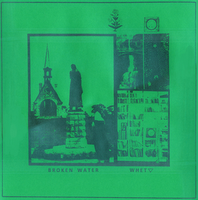 Tucked within the psychedelic and synthetic lo-fi of Shawn Reed's Night People label is an album that is as much an anomaly to the label as it is a sibling to it in its reimagining of classic sounds. Broken Water, a trio from Olympia, Washington, tap into their region's roots to dig up the blue collar crunch of a past as quickly forgotten as it was widely embraced. Whet touches every stepping stone of grunge without falling into the tar pit of predictability, not only proving rock and roll is still a powerful genre but that it can be as weird and untamed as the bands that call Night People home.
Tucked within the psychedelic and synthetic lo-fi of Shawn Reed's Night People label is an album that is as much an anomaly to the label as it is a sibling to it in its reimagining of classic sounds. Broken Water, a trio from Olympia, Washington, tap into their region's roots to dig up the blue collar crunch of a past as quickly forgotten as it was widely embraced. Whet touches every stepping stone of grunge without falling into the tar pit of predictability, not only proving rock and roll is still a powerful genre but that it can be as weird and untamed as the bands that call Night People home.
Whet is an unapologetic blast from grunge's past. The album spills over with the distorted crunch once recognized as the Northwest's calling card. Yet nothing created by Broken Water seems disingenuous, rather Whet is perhaps the most authentic artifact of an era gone by from a new generation that couldn't give a damn about what once stood where grunge's tombstone now casts its shadow. The touchstones of Broken Water are immediate and the wave of nostalgia that initially greets the ears is soon surrendered with the band's own spin on the blue collar music of the '80s and early '90s.
Album opener "Say What's On Your Mind" takes a cue from Northwestern neighbor, Phil Elverum. Combining the black wooden push and pull with a lazy Dinosaur Jr. melody, the track is both catchy and ferocious. That old crick in your neck from your headbanging days is bound to ache after the song has run its course. The mix of unhinged urgency and stoner cool that permeates "Say What's On Your Mind" seeps into the roots of Whet as it crawls deeper into the forests and mountains of the Northwest. "Dead Light" is a sleepy bong hit after a night of second shift shit and your last call bourbon has left you with little energy for anything else but slumber.
The comfortable juxtaposition of mellow vibes with loud guitars and pounding drums is one that is as old as time but Broken Water's take is surprisingly fresh. With the spotlight returning to the Northwest in the face of reunions and rediscoveries, Broken Water proves able to carve their own niche without relying on a scene revival. Rather, the trio from Olympia seems poised to take the scraps of old and build a style anew—away from hot lights, designer suits, and the A&R buffet.
samples:
Read More
- Administrator
- Albums and Singles
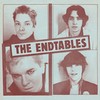 Beginnings are sacred, even for punk rockers. Whatever path they may follow later, musicians carry their formative experiences with them like a talisman. The Endtables carry that kind of sacrosanct aura. Their influence trumps any concern about style, recognition, or even competence. For a few freaks in Louisville, Kentucky circa 1979, they were the most important band on earth.
Beginnings are sacred, even for punk rockers. Whatever path they may follow later, musicians carry their formative experiences with them like a talisman. The Endtables carry that kind of sacrosanct aura. Their influence trumps any concern about style, recognition, or even competence. For a few freaks in Louisville, Kentucky circa 1979, they were the most important band on earth.
 
Prior to the omnipresence of digital media, the phrase "Do it Yourself" was often a bitter necessity. After all, who was going to write an anthem about circumcision but the Endtables themselves? They were Kentucky’s own salvo against the creeping provincialism of their era. Though most of their lyrics deal the workaday punk-rock themes of that time (greed, militarism, conformity, et cetera) lines like, "his penis is a grossity/it hangs to the floor/streachy and formless, but it’s clean" still have bite to them. It isn’t surprising that the band is discussed thirty years on; they still come off as genuinely unhinged, even now, in an age when taboo-breaking has become cliché.
For all their crude energy, the Endtables could never form musical personality distinctive from their peers. The majority of the tracks keep to a trebly blues-influenced sound common among Midwest punk bands of that era.You can hear premonitions in the snarl of Ron Ashton’s guitar work for the Stooges and singer Steve Rigot’s bleating voice can sound very similar to David Thompson’s singing in Pere Ubu and Rocket from the Tombs. Occasionally, the band will break into something a little less uncommon, such as the heavy riffing in the intro of "Process of Elimination (live)", but the lack of musical idiosyncrasy confirms that the they were of their time, not ahead of it.
Yet retrospective criticism never does full justice to a band like the Endtables. In their era, pop had become desiccated from arena tours and pre-programmed radio playlists. It took hundreds of bands in dozens of cities to convince a generation that live, self-produced music was winning proposition. While bands such as the Ramones and Black Flag continually gather praise for reviving street-level enthusiasm for rock and roll, it was the lower profile bands that kept regional music alive.During their short existence, the Endtables established a scene in Louisville that would eventually produce artists such as Squirrel Bait, Slint, King-Kong and Palace Music. While they never achieved the same artistic variety or creative influence of those groups, precedence alone should assure the Endtables some kind modest legacy.
samples:
Read More
- Administrator
- Albums and Singles
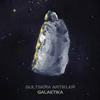 Galaktika is an album full of welcome surprises. A miasmic mish-mash of otherworldly electronica it ranges free form through a whole gamut of seductive sound. A narrative arc can be traced through the way the songs unfold sequentially while still brimming with unpredictable squelches, pitter-patter, and bizarre vapor trails. Richly layered and tightly woven it never feels too dense, but is rather evocative of the ever changing astral imagery of a serialized dream, each sound expertly placed to tantalizing effect.
Galaktika is an album full of welcome surprises. A miasmic mish-mash of otherworldly electronica it ranges free form through a whole gamut of seductive sound. A narrative arc can be traced through the way the songs unfold sequentially while still brimming with unpredictable squelches, pitter-patter, and bizarre vapor trails. Richly layered and tightly woven it never feels too dense, but is rather evocative of the ever changing astral imagery of a serialized dream, each sound expertly placed to tantalizing effect.
 
Lingering throughout the album are the ghostly voices of disembodied monks who continue to haunt the living. I get the feeling there is something sinister about them, or maybe just insane, as if they had lived on an isolated space station instead of in an earthly cloister. The common thread stitching the album together is that of space, its vastness, and the incredible distances separating the orbiting worlds, stars, clouds, and man made junk floating in the blackness. While by no means a new theme in electronic music, it is one that continues to be rewarding as qualified sound artists like Jake Dangers (with Music for Planetarium), and Nurse With Wound (on Space Music) continue to mine the territory. Now Moscow-based Alexey Devyanin, the man behind Gultskra Artikler, adds his contribution to the fold and he more than holds his own.
Sometimes it is hard to distinguish where one song lets up and another starts as they flow, for the most part, seamlessly into each other. The title track opens the album on an esoteric note with the deconstructed chants, both somnolent and abstract, that recur throughout. "Nanorobot" begins with timpani rumbles and the clinking shakes of a shamanic rattle before primitive wind instruments sidle their way in. I perceive the nanorobots as molecular glitches inside the keyboards, like they are eating at the circuitry, in the process of breaking them down. "Saturn" is a brilliant end to the first side. An intricate and melodious pulse drives through what has become a soup of ectoplasmic speaker sludge and crackling electricity.
The second side mixes things up even further as metallic electro-acoustic scrapings are merged with warm synthesizer washes, as on "Sputnik." Further precious moments are offered on "Asteroid" where a more symphonic approach is taken with a focus on the achingly lush synth strings that eventually fade out under the influence of gated tremolo. "Niti" continues with harmonic bell tolls softly reverberating, unmoored and set adrift. The strength of these two songs is in their emotional resonance, which makes for a nice touch amidst the otherwise recondite manifestations on this album. "Asteroid" and "Niti" also remind me of the power electronic music can have for touching the soul.
Great care has been shown in the creation of Galaktika. As a listener I am happy to travel with Devyanin for he is a courageous explorer. This release is presented in two forms, as a limited run of colored vinyl (mine is rubber duck yellow), and as an MP3 download, showcasing what I think are two ideal scenarios for listening. One is at home in the evening with the lights darkened and the hi-fi ready to go as I close my eyes and get comfortable for a bit of armchair voyaging. The other is while lying in bed with my headphones connected to a portable player for a completely immersive session. Either way there is one thing I can be sure of before take off: Gultskra Artikler has prepared an artful itinerary.
samples:
 
Read More
- Administrator
- Albums and Singles
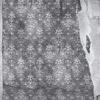 Pat Maherr, the man behind this project, has assembled a large, intensely atmospheric collage exclusively from old recordings of Richard Wagner’s works. Weighed down with history, it is sometimes hard to separate Wagner’s music from the man and the events which occurred after him to which he has become linked (the rise of anti-Semitism, in case it needed spelling out). Maherr has reclaimed and reduced Wagner’s music into its barest form, only the faintest whisper of recognition remains. Yet, like the composer’s original works, this album seems to go on for an eternity.
Pat Maherr, the man behind this project, has assembled a large, intensely atmospheric collage exclusively from old recordings of Richard Wagner’s works. Weighed down with history, it is sometimes hard to separate Wagner’s music from the man and the events which occurred after him to which he has become linked (the rise of anti-Semitism, in case it needed spelling out). Maherr has reclaimed and reduced Wagner’s music into its barest form, only the faintest whisper of recognition remains. Yet, like the composer’s original works, this album seems to go on for an eternity.
Plays Wagner sounds ancient. It sounds far older than even the legends that Wagner based his original works on. The grainy old vinyl recordings obtained by Maherr have been processed and re-recorded to tape. The cassette master was then used to create this CD, giving a ghostly hiss and gently adding a layer of saturated to distortion to the music. The end result is a haunting and dismal sound collage that at times brings to mind the drones and soundscapes that pepper David Lynch’s soundtracks between the ersatz 50s rock and roll and jazz.
While I like the concept and I like the general aesthetic of the musical outcome, an entire album of processed Wagner recordings is too much. Unlike other found sound artists like Philip Jeck, Maherr’s approach does not add much to the sounds he has co-opted beyond what sounds like some time stretching and reverb. Equally, the sounds he has amassed and mutated end up becoming drab audio wallpaper or a game of "spot the composition." I am not meaning to sound so dismissive but listening to this in one go is harder than an opera novice sitting through a complete cycle of Wagner’s Der Ring des Nibelungen. I have found that dipping in and out of Plays Wagner is much more rewarding, defeating the ear fatigue I was getting from listening to the full album.
A more judicious edit of this album might have been preferable but overall Plays Wagner is not a bad album. Yet I cannot help it would have made a much better EP.
samples:
 
Read More
- Administrator
- Albums and Singles

Read More
- Administrator
- Albums and Singles
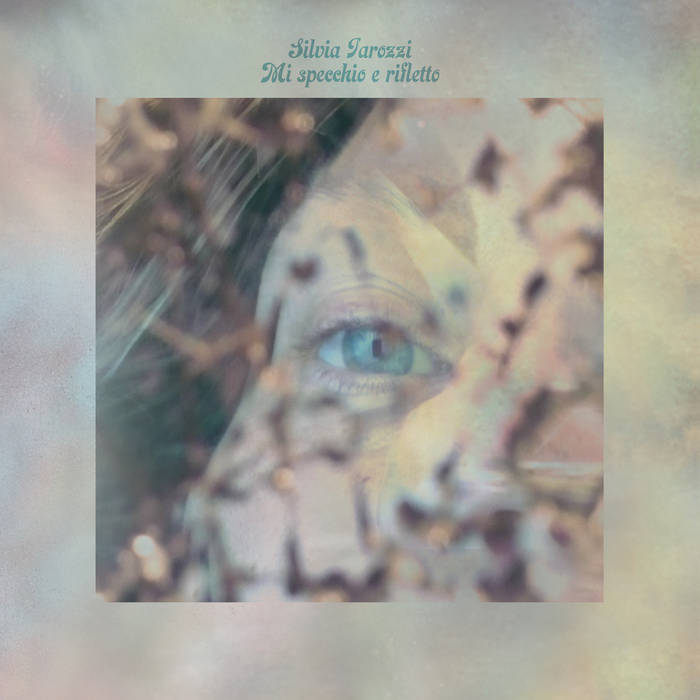 This music was inspired by the words of Italian poet Alda Merini, institutionalized away from her family for much of her life, renowned for the unflinching honesty of her work. Years into this project, when copyright problems forced Silvia Tarozzi to create lyrics of her own, she followed Merini’s example and drew upon her own experiences and relationships mainly from 2008-2019. During this period, Tarozzi married, had a child, lost family members, and moved to another country, all of which inform this rich, varied, and deeply personal work finely balanced between firm structure and breezy abstraction.
This music was inspired by the words of Italian poet Alda Merini, institutionalized away from her family for much of her life, renowned for the unflinching honesty of her work. Years into this project, when copyright problems forced Silvia Tarozzi to create lyrics of her own, she followed Merini’s example and drew upon her own experiences and relationships mainly from 2008-2019. During this period, Tarozzi married, had a child, lost family members, and moved to another country, all of which inform this rich, varied, and deeply personal work finely balanced between firm structure and breezy abstraction.
Tarozzi has collaborated with the legendary Elaine Radigue and Pauline Oliveros and Mi Specchio e Rifletto confirms her virtuosity but also shows the depth of her own vision. One song, "xxx Anna," in which a beautiful yet feverish and dreamlike atmosphere eventually clears, is dedicated to her grandmother whose last years were spent with "a confused mind"yet "wonder intact inside her." Other songs came from the fertile imagination which accompanied her "psychedelic" experience of pregnancy, amplifying and revealing hidden aspects of being.
The idea of visions coming from altered physical states is reminiscent of Simon Jeffe’s account of the dream he had when ill which led to his founding the Penguin Cafe Orchestra, so it is perhaps fitting that the opening track here is comparable with the PCO's work. Called "Al Cancello" it starts with slow solo violin then the pace picks up with a repetitive rhythm, plucked strings and bass, are added, before the melody is taken by a flute. Translating as "At The Gate" this beautiful piece conjured into my mind a child in an idyllic landscape, skipping, breaking into a run, and flying a kite.
A great strength of this record is the way in which vocals are used: often isolated, looped, and set against instrumentation which does not obscure them. The plaintive "La Forza del Canto" is Tarozzi addressing Alda Merini directly, acknowledging their shared birthday, giving thanks for her inspiration. The title track "Mi speechio e rifletto/I speak and reflect" illustrates just that, by creating a hypnotic pattern from several layered loops of Tarozzi's voice. The timbre and organization of the vocals across the whole album is such that poor comprehension of Italian need not detract. Translated text is included though.
There is fantastic contrast throughout this release. "Domina" has an atmosphere similar, if smoother and prettier, to some of Wendy Carlos’s heavier work on the soundtrack to A Clockwork Orange. Here Tarozzi uses keyboards to create fuzzy bass notes and soaring strings as a backdrop against which she warmly intones "stop listening to them, they will exploit you!"
"Cunning" features only her keyboards and Domenico Caliri’s electric guitar with added fuzz and sustain. On "L’assenza" (Absence) Vincenzo Vasi's electric bass is the closest I’ve heard to some of the work on Brokeback’s From the Cook County Water Table and combines beautifully with Silvia Tarozzi's violin and accordion. "La so stanza dell’affetto/The substance of affection" starts with a repeated disintegrating loop giving way to cool vocals and a delicate repeated guitar figure, then finally sounds like a slide guitar outtake from Wim Wenders’ Paris Texas.
Even with the translated text, the meaning of "Sembra neve/It looks like snow" is unclear. It may be about her new son, Romeo, or an ode to a landscape under the Italian sun. This track may be my favorite. It begins with Valentina Malanot's ethereal voice combining well with Tarozzi’s more spoken vocals which give way to ripe squarks from Edoardo Marraffa’s tenor saxophone and Tarozzi’s organ tone. Eventually gentle plucks upon Enrico Lazzarini's double-bass and Tiziano Popoli's piano provide a base for perfect absurdity and confusion: sampled Dada mutterings by Raoul Hausmann. It is a terrific album.
Read More
- Administrator
- Albums and Singles
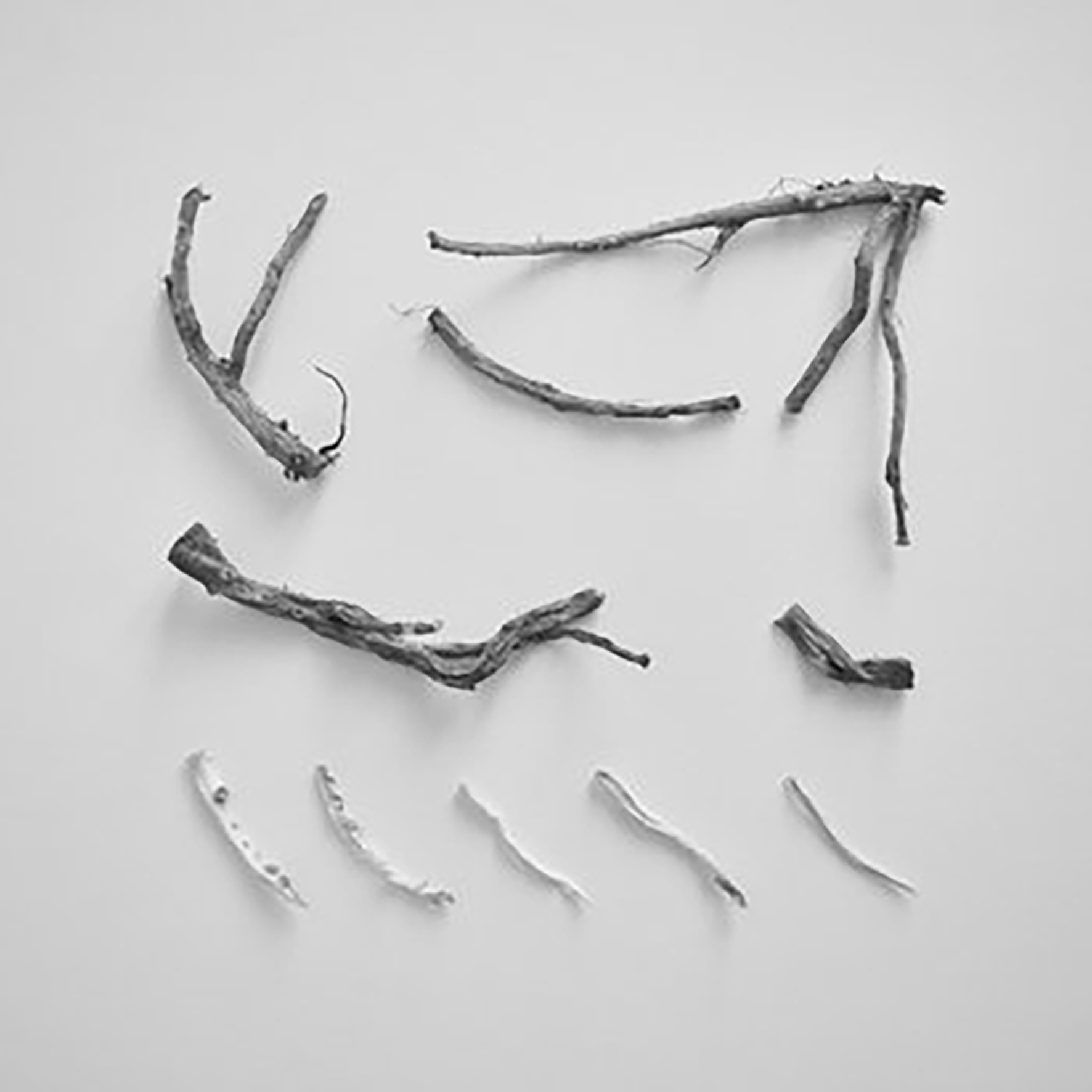 As a longtime and somewhat obsessive fan, I am always eager to hear any new Richard Skelton project, but it is fair to say that his discography has become an increasingly varied, unpredictable, and prolifically expanding world to navigate in recent years. While I would hesitate to describe this latest release as "back to basics" or a return to form of any kind, These Charms May Be Sung Over A Wound is nevertheless an unambiguously significant album for Skelton, as it is both his first vinyl release in roughly a decade and an extremely rare departure from his own Aeolian/Corbel Stone Press imprints. As befits such an auspicious event, the album unveils yet another new stage in Skelton's restless creative evolution, expanding upon the epic scope of his recent heavy drones towards both increasingly industrial textures and a more melodic and harmonically complex sensibility than usual. While I personally welcome the latter more than the former, These Charms is easily the most ambitious and substantial stand-alone opus that Skelton has released in years.
As a longtime and somewhat obsessive fan, I am always eager to hear any new Richard Skelton project, but it is fair to say that his discography has become an increasingly varied, unpredictable, and prolifically expanding world to navigate in recent years. While I would hesitate to describe this latest release as "back to basics" or a return to form of any kind, These Charms May Be Sung Over A Wound is nevertheless an unambiguously significant album for Skelton, as it is both his first vinyl release in roughly a decade and an extremely rare departure from his own Aeolian/Corbel Stone Press imprints. As befits such an auspicious event, the album unveils yet another new stage in Skelton's restless creative evolution, expanding upon the epic scope of his recent heavy drones towards both increasingly industrial textures and a more melodic and harmonically complex sensibility than usual. While I personally welcome the latter more than the former, These Charms is easily the most ambitious and substantial stand-alone opus that Skelton has released in years.
I once had a friend who was convinced that a band could only be great for either three albums or five years.Obviously, there are a handful of exceptions and a number of impassioned debates that can be had on the subject, but I was nevertheless struck by how often that pronouncement proved to be true.While bands tend to involve multiple creative forces interacting with one another rather than just one overarching vision, it does often seem like there is a finite amount of inspiration and that it inevitably runs its course after just a few releases.Consequently, I am always somewhat astonished when an artist like Richard Skelton comes along and manages to convincingly reinvent himself again and again to release a series of great albums that share little in common with one another.Obviously, collaborating with Autumn Richardson played no small role in keeping Skelton's ideas from growing stale or repetitive, but the more significant factor seems to be that he is a fundamentally curious and deep-thinking fellow who regularly draws inspiration from esoteric and non-musical sources.Uncharacteristically, those inspirations are less explicit than usual for These Charms May Be Sung Over A Wound, but Skelton does note that the album is "intricately and indelibly" bound to his regional landscape (in this case, the valleys along the Scottish border).In that regard, These Charms May Be Sung certainly seems to adhere to the same geological time scale and scope that has informed many other recent Skelton releases.The twist this time around is that the textures that Skelton employs have rarely been less organic and earthy.That newly industrial-inspired aesthetic is best exemplified by the first song that surfaced from the album ("For The Application of Fire"), which slowly transforms a ringing bass motif into something akin to a mechanized and relentlessly forward-moving juggernaut.
For the first third of the album, however, Skelton's more industrial textures are beautifully intertwined with genuine human warmth and a poignant emotional undercurrent.If I have one minor grievance with Skelton's major statements over the last couple of years, it is that his geologic scale and inspirations leave little room for human-scale tenderness and emotion.Obviously, on the rare occasions when Skelton manages to convincingly evoke shifting tectonic plates or a collapsing star, I am perfectly fine with that absence and I am more than happy to just sit back and enjoy the spectacle.Nevertheless, the vulnerability and soul at the heart of pieces like "For Either Deadened or Undeadened" is a welcome return to the more raw and honest emotional intensity of Skelton's classic Type albums (though the emotions here tend to be more bittersweetly radiant than they were in his darkly cathartic early days).In any case, "For Either Deadened or Undeadened" is an absolutely gorgeous piece, simultaneously evoking the slow, sensuous curl of smoke and a sun-dappled autumn landscape.Elsewhere, the tone of "Against All Tendernesses of the Eye" is a bit more ambiguous, but it is similarly successful, as Skelton slowly builds from a foundation of low, oscillating drones into a heavenly crescendo of gently shimmering and quivering harmonies.
When the album arrives at "For The Application of Fire," however, the mood quickly descends into darker territory and mostly remains there.For the most part, the pieces that comprise the second half of the album share an aesthetic centered around slow-motion swells of layered drones, shifting harmonies, and sharp feedback-like textures.Surprisingly, however, there is also the recurrent hint of a beat.On pieces like the wonderfully gnarled and slow-burning "For a Swarthened Body," the deep, subterranean throb remains merely a hint, but both "Against Bite and Rend of Snake" and "For All Cleansings" include enough other rhythmic elements to almost approximate a strain of slow-motion, deconstructed dub-techno (or at least something consistent and machine-like).At the risk of sounding crazy or delusional, I genuinely believe that there is an actual high-hat being played in "Against Bite and Rend of Snake," though it is certainly possible that Skelton is just extremely good at rhythmically harnessing hiss.
Notably, the album borrows all of its titles from "19th-century translations of Anglo-Saxon leechdoms," which are "ancient medicinal remedies" that sometimes "required the recitation of charms to aid the efficacy of the cure."In keeping with that theme, this release is billed as a sort of album-length incantation against fear and darkness.Sadly, I cannot offer a definitive assessment on this release's latent supernatural powers, but I can conclusively state that these songs offer a vivid and immersive listening experience that makes quite an effective (if temporary) escape from reality (particularly when intensified through headphones or extreme volume).At this point, only "For Either Deadened or Undeadened" has fully earned a place in the imaginary "Richard Skelton's Greatest Hits" collection that exists in my head, yet the individual songs on this album are secondary to the deeper, more sustained whole, which is a mesmerizing feast of richly textured, slow-burning transformations executed with a sublime lightness of touch.Moreover, Skelton's dalliance with industrial textures arguably brings his own aesthetic even closer to the aesthetic of the natural world, as ugly harmonies and buzzing, blackened textures are inextricably intermingled with moments of genuine beauty (just like the natural world includes both rapturous sunsets and gazelles being ripped apart by lions).I suspect there is probably a lot more that can be read (or projected) into These Charms May Be Sung that has not occurred to me yet, but the true value of Skelton's conceptual ambitions lies primarily in the fact that they led him to make one hell of a great album.At the present time, there are still a few other Skelton releases that I would categorize as "somewhat more crucial" than this one, but Charms conclusively belongs in the pantheon of his finest releases and it only seems to get better as additional details and layers emerge with subsequent listens.
Samples can be found here.
Read More
- Administrator
- Albums and Singles
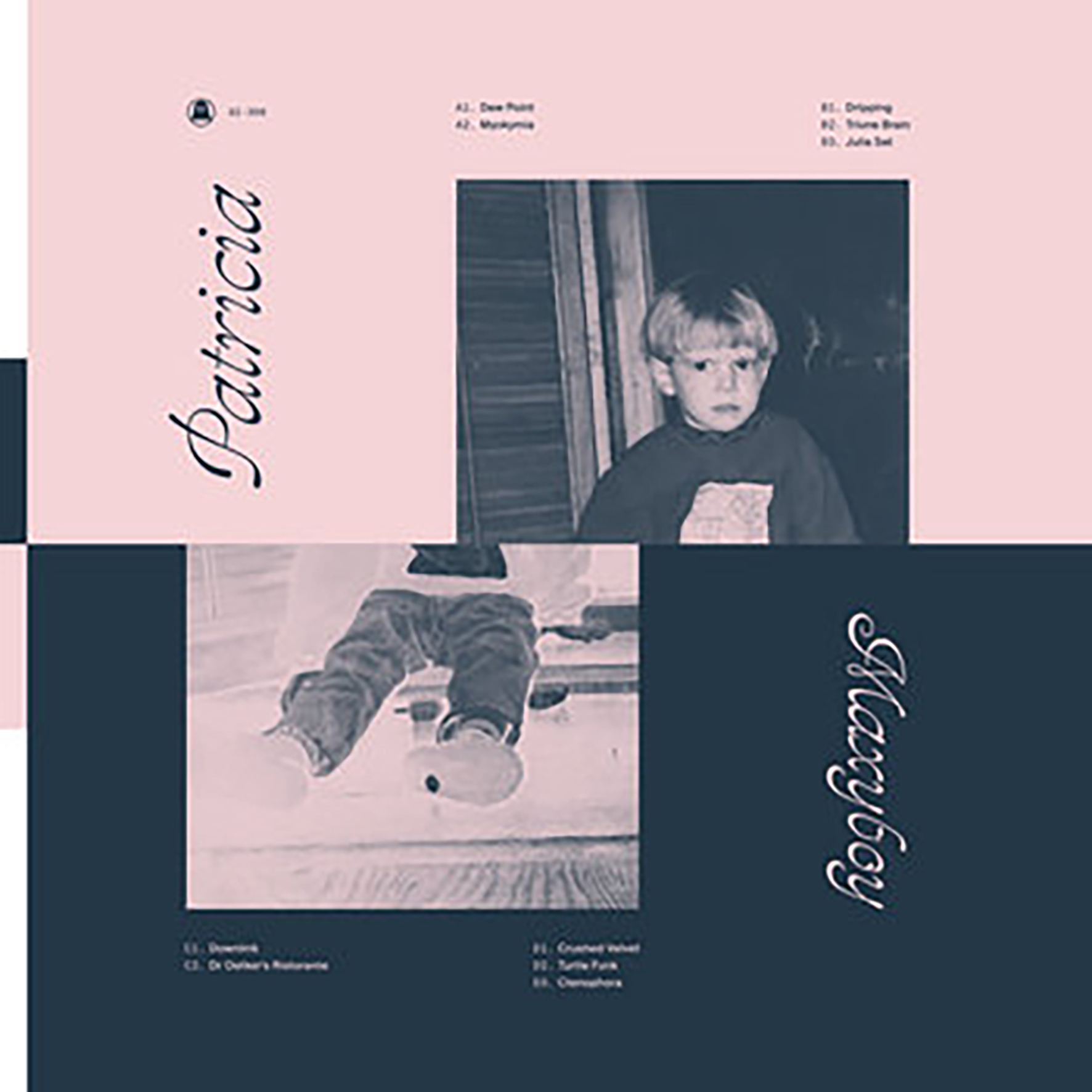 This solo project from Max Ravitz has long fascinated me, as he has proven himself to be a fitfully brilliant techno producer over the years, yet his formal albums do not always play to his strengths. As a result, there is no telling where and when a brilliant new song will surface or whether that particular aesthetic will ever be revisited. And then there are occasional surprises like this latest release, wherein Ravitz unabashedly devotes himself to crafting woozy, hook-heavy dance music that will unavoidably be described as "AFX-style acid techno." Obviously, it would be hard to pick a more obvious influence than Richard James, but the idea of a non-willfully difficult Richard James who is perfectly content with crafting conventionally enjoyable hooks and grooves admittedly holds quite a lot of appeal. And it would be a mistake to paint Ravitz as an unimaginative or derivative artist: Maxyboy just happens to catch him in an atypically nostalgic and synth-centric mood (which certainly befits his recent relocation to North Carolina to work for Moog). Whether or not this poppier throwback side of Ravitz's vision sticks around is anybody’s guess, but there is no denying that he is very good at what he does and Maxyboy is an unusually strong and varied collection of songs.
This solo project from Max Ravitz has long fascinated me, as he has proven himself to be a fitfully brilliant techno producer over the years, yet his formal albums do not always play to his strengths. As a result, there is no telling where and when a brilliant new song will surface or whether that particular aesthetic will ever be revisited. And then there are occasional surprises like this latest release, wherein Ravitz unabashedly devotes himself to crafting woozy, hook-heavy dance music that will unavoidably be described as "AFX-style acid techno." Obviously, it would be hard to pick a more obvious influence than Richard James, but the idea of a non-willfully difficult Richard James who is perfectly content with crafting conventionally enjoyable hooks and grooves admittedly holds quite a lot of appeal. And it would be a mistake to paint Ravitz as an unimaginative or derivative artist: Maxyboy just happens to catch him in an atypically nostalgic and synth-centric mood (which certainly befits his recent relocation to North Carolina to work for Moog). Whether or not this poppier throwback side of Ravitz's vision sticks around is anybody’s guess, but there is no denying that he is very good at what he does and Maxyboy is an unusually strong and varied collection of songs.
In 1995, beloved punk trio Jawbreaker followed the darkly cathartic 24 Hour Revenge Therapy with their cleanly produced major label debut Dear You.Predictably, a huge number of their fans felt betrayed and the band broke up in the wake of the resultant backlash.Within a few years, however, many of those same fans gradually realized that Dear You actually featured a remarkable number of Jawbreaker's best songs and the album eventually came to be regarded as something of an improbable, misunderstood classic.It is probably safe to say that Ravitz's fans did not have quite as extreme of a reaction when they first heard Maxyboy, but the difference between this release and previous Patricia releases is similarly dramatic and significant.I was especially struck by the magnitude of that transformation when I revisited last year's excellent Heavy Merging EP last night, as songs like "Balance Acid" masterfully combine a woozily lo-fi production aesthetic, elegantly buried hooks, and a very rhythm-focused compositional approach.With Maxyboy, Ravitz polished up the production and took his vision in a more overtly melodic direction just like the hapless Jawbreaker…for the most part.That said, Maxyboy is too elusively varied to fit most generalizations, which makes me wonder if the true shift may have simply been from Ravitz's usual recording set-up to something more akin to his more stripped-down live set-up.Regardless of how he recorded these ten pieces, however, it is abundantly clear that Ravitz approached this album with great focus and exactitude and that he also composed some of his strongest hooks to date.Sometimes he focused more on beats and sometimes he focused more on melodies or textures, yet every single song on Maxyboy is tightly constructed, effectively paced, and entirely free of unnecessary clutter.In the case of lead single "Downlink," Ravitz managed to focus on seemingly everything at once, as the piece is an impressively sophisticated assemblage of intertwined moving parts from start to finish.
While I admittedly gripe about the current climate of synth fetishism a lot, it is still a delight to hear the textural virtuosity that an artist can unleash when they are in complete command of their gear, as melodies that vibrantly sizzle, bubble, and smear tend to be far more compelling than ones that do not.The opening "Dewpoint" is especially wonderful example of that phenomenon, as an arpeggiated pattern beautifully simmers and snarls beneath a tender chord progression, occasionally intensifying into blurting, ragged, and streaking catharsis. And then Ravitz unveils a lovely and poignant descending melody for a final crescendo.It is difficult to overstate how much such attention to craftsmanship matters, as Ravitz's best songs all share a vivid dynamic intensity, a constant sense of forward motion, and a genuinely satisfying compositional arc.In a similarly acid-tinged vein, "Dr Oetker's Ristorante" is a feast of blearily slow-moving chords, skittering rhythms, and vibrantly gurgling and squirming bass patterns. To be fair, it resembles classic AFX more than anything else on the album, but it is equally true that it would have easily been a highlight of any AFX release it appeared on.Elsewhere, the closing "Ctenophora" is another notable piece, as Ravitz opts to go beatless for a sublime and hallucinatory synth reverie of beautifully juxtaposed twinkling and oozing textures.Those highlights are just the tip of the proverbial iceberg though, as Maxyboy packs enough other pleasures to feel almost like a singles collection, as I am especially fond of the propulsive and infectiously hooky "Crushed Velvet" and the nuanced rhythmic tour de force of "Myokymia."In fact, Ravitz only truly misses the mark once, as relentless kick drum thump of "Dripping" feels quite leaden compared to the album's other songs (and its jazz-inspired chords never quite blossom into anything more).   
As always, my impulse is to try to rank Maxyboy within the larger context of the Patricia discography, but it feels too much like a one-off detour for that to feel appropriate.While it is probably Ravitz's most accessible and immediately gratifying album, the more understated and veiled melodies of earlier Patricia releases are a bit better suited to long-term listenability.That said, it is tough to hear a piece like "Crushed Velvet" and imagine any way that Ravitz could have possibly improved upon what he did.And if Ravitz wants to release a loving homage to classic early '90s techno in 2020, I am certainly not going to complain (and I cannot think of another current artist catering to that specific strain of nostalgia more skillfully than he does).Plenty of bands have been cannibalizing late '70s/early '80s post-punk for the last four decades and it has occasionally yielded some wonderful results.With Maxyboy, Ravitz achieves a similar feat—it certainly is not Ravitz's most distinctive album, but it may nevertheless feature the most enviable hit-to-miss ratio of anything he has released to date.While I am (unobjectively) hoping that the next Patricia album will be more of a middle ground between Ravitz's Opal Tapes fare and this release rather than an increasingly Moog-y continuation of this arc, Maxyboy is convincing evidence that Ravitz's execution is only growing more assured and dazzling with each major statement.
Samples can be found here.
Read More
- Administrator
- Albums and Singles
 The German language has words for nearly every complex emotion imaginable. "Weltschmerz" translates to "world-weariness" or, literally, "world pain." Einstürzende Neubauten have touched on many aspects of it throughout their multiple manifestations, but never quite as deeply and consistently as on their 40th anniversary release Alles in Allem (All in All). Formed around insights on their home city of Berlin, the album’s "schwung" expands beyond the German capital city’s borders, achieving weltschmerz twofold: the album was a collaboration for and with worldwide fans, allowing them to contribute lyrically to the album by answering questions posed by Blixa Bargeld, resulting in an album that — while retaining a presence of their home city — maintains no lyrical patriotism to any specific geographic location. Filled with edgy sounds blended with poetry, Bargeld's rich baritone, and traditional sound elements, Alles in Allem showcases their most mature compositions to date whilst maintaining their unique approach to songwriting.
The German language has words for nearly every complex emotion imaginable. "Weltschmerz" translates to "world-weariness" or, literally, "world pain." Einstürzende Neubauten have touched on many aspects of it throughout their multiple manifestations, but never quite as deeply and consistently as on their 40th anniversary release Alles in Allem (All in All). Formed around insights on their home city of Berlin, the album’s "schwung" expands beyond the German capital city’s borders, achieving weltschmerz twofold: the album was a collaboration for and with worldwide fans, allowing them to contribute lyrically to the album by answering questions posed by Blixa Bargeld, resulting in an album that — while retaining a presence of their home city — maintains no lyrical patriotism to any specific geographic location. Filled with edgy sounds blended with poetry, Bargeld's rich baritone, and traditional sound elements, Alles in Allem showcases their most mature compositions to date whilst maintaining their unique approach to songwriting.
Regardless of the band’s musical manifestation through the years, Einstürzende Neubauten’s identity has remained central focused on creative yet carefully crafted compositions, regardless of how chaotic things may seem at first listen. The wayfaring listener will recognize multiple geographical districts within West Berlin, with Bargeld paying visitations to the northern district of Wedding to Friedenau in the south, by way of Liechtensteinbrücke, the Landwehr Canal ("Landwehrkanal") and the Grazer Damm, to ultimately end at the abandoned Tempelhof airfield. With each track sampled at various locations across the city, one can trace Bargeld’s steps on the journey around Berlin, first stopping to visit "Ten Grand Goldie," an electrifying opener with typical Neubauten custom-made squeaks, booms and clangs merged with funky brass and organ.
The rest of the album is more gentle melodically, though hardly in subject matter. Bargeld meanders around to Landwehr Canal, where we learn about the death of Marxist revolutionary, open space, philosopher and anti-war activist Rosa Luxemburg, shot in the head in 1919 and her body dumped into the canal. "Möbliertes Lied" (Furnished Song) builds on metallic percussions (wah-wah spring, metal sheet) while Bargeld’s emotive wafts over farfisa organ, belying the content within: "Den Herrgottswinkel leer geträumt / Offene Weite, nichts von heilig / Um Hummers Willen: Keinen Gott!" (Our Lord’s Corner dreamed away / Vast open spaces, not at all sacred / For Heaven’s sake: No God!!) The aforementioned weltschmerz pierces through every track, but deeply so in "Taschen," which references the bags used by refugees to pack their only belongings in, serving to inject the reality of an outside world into listening ears: "What are you seeking in your dreams? / We seek nothing / We’re waiting." Lost and homeless, with no solid future, the divide between refugee and listener is stark. "Between us and you / Surge the waves colossal / A ravenous monstrosity."
"Seven Screws" is lyrically intriguing, and generated a lot of discussion as to its interpretation amongst supporters. I was struck by the section "I sing and I sing / Until the Hundred-eyes gets sleepy / The strong man now wears a dress / it burns itself deep into his skin." I was reminded of the hundred-eyed giant Argus from my Latin classes, guardian of Io who had been turned into a heifer to avoid the wanting eyes of the god Zeus. While there is no firm interpretation of the track, the myth birthed the phrase "watched by the eyes of Argus," which is to be subjected to intense scrutiny, in action, word or deed, often to a distressing degree. The ability to be oneself without the scrutiny of society is surely the greatest weltschmerz in our ever-connected, ever-shrinking modern global village.
Everything being taken into account, Berlin is no longer so very different from that global village — all in all.
Read More

